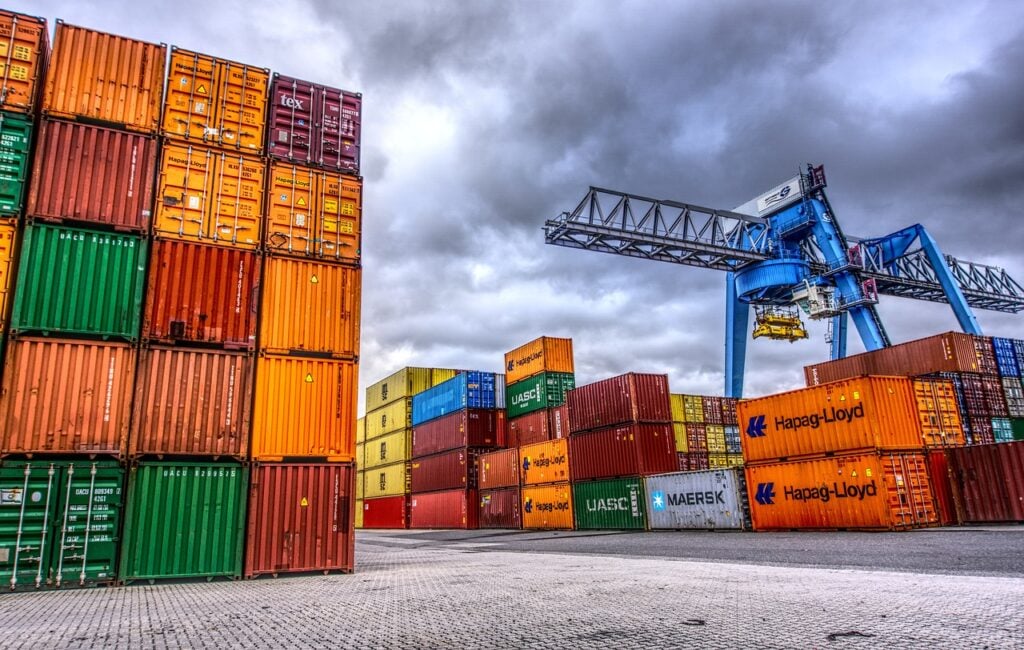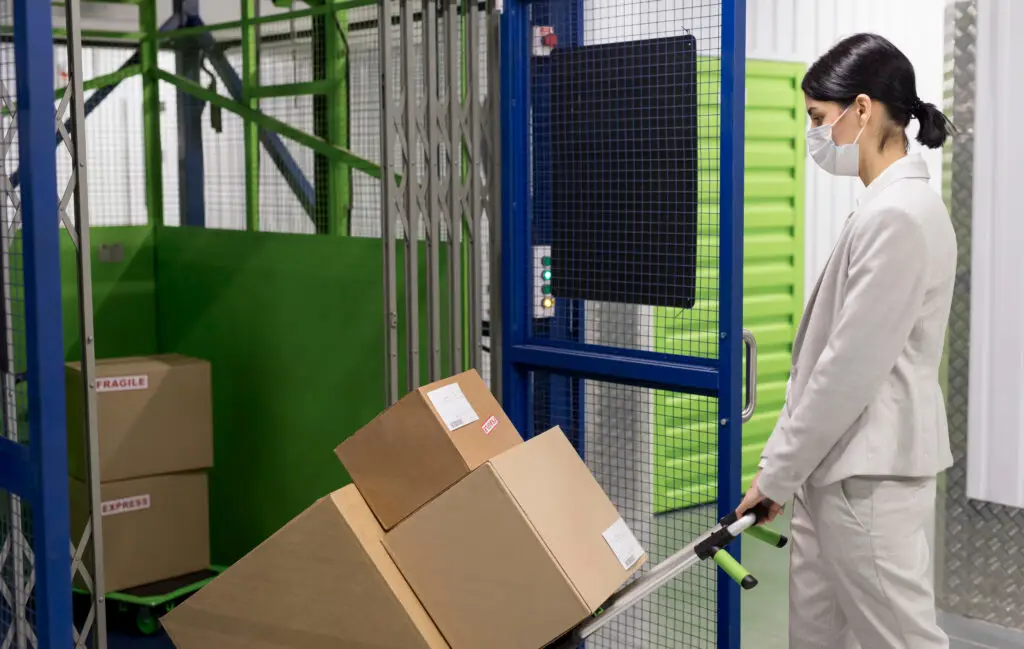Tackling Scope 3 emissions in container shipping is essential for achieving sustainability and regulatory compliance. These emissions make up the majority of a company’s carbon footprint, extending beyond direct operations to the entire supply chain.
For container shipping companies, managing these emissions is not only a regulatory requirement but also a strategic opportunity to reduce costs, improve operational efficiency, and build stronger stakeholder relationships.
Understanding Scope 3 Emissions in Container Shipping
What Are Scope 3 Emissions?
Scope 3 emissions refer to indirect greenhouse gas (GHG) emissions from activities within a company’s supply chain. These include upstream activities like transporting goods from suppliers and downstream activities like product distribution.
Scope 3 emissions often account for the largest share of total CO₂ emissions in container shipping, making them a critical focus for sustainability initiatives.
A study by Kraft Foods revealed that 90% of its total carbon emissions came from Scope 3 sources, underscoring how significant these emissions can be. Addressing Scope 3 emissions allows container shipping companies to align with sustainability goals, reduce greenhouse gas emissions, and support global climate objectives.
Why Scope 3 Emissions Matter in Container Shipping
Scope 3 emissions under Category 4 (upstream transportation) and Category 9 (downstream distribution) are critical in container shipping. These emissions result from moving goods between suppliers, warehouses, and end customers.
Managing Scope 3 emissions ensures transparency across the supply chain. It also improves decision-making, lowers costs, and strengthens stakeholder relationships.
Transparency in emissions reporting is increasingly demanded by regulators, investors, and consumers alike. With the EU’s Corporate Sustainability Reporting Directive (CSRD) mandating Scope 3 emissions reporting, businesses must address these emissions to remain competitive and compliant.
Strategies to Reduce Scope 3 Emissions in Container Shipping
Use a Carbon Calculator for Accurate Emissions Tracking
Accurate emissions tracking is essential to developing effective reduction strategies. Dockflow’s RealCalc® measures CO₂e emissions across all shipments, providing granular insights into emissions by carrier, transport mode, and region. This enables companies to identify high-emission areas and target them for improvement.
Set Net Zero Goals
Establishing net-zero carbon emission targets creates a clear roadmap for sustainability. Collaborating with sustainability experts helps businesses define achievable goals.
According to Net Zero Tracker, half of the world’s largest companies have committed to net-zero strategies, reflecting a broader trend across industries.
Container shipping companies can follow suit by setting science-based targets for emissions reduction and regularly measuring progress.
Understand Greener Shipment Modes
Shifting to greener transportation modes, such as rail or marine shipping, significantly reduces carbon emissions. For example, rail transport emits up to 85% less CO₂ compared to road freight per ton-kilometer. Analyzing emissions data helps companies identify where greener options can be implemented, balancing cost efficiency with sustainability goals.
Consolidate Shipments for Greater Efficiency
Consolidating shipments improves load efficiency and minimizes empty cargo space. By centralizing logistics planning and using route optimization software, companies can reduce travel distances, avoid delays, and improve fuel efficiency. These measures not only save costs but also contribute to significant reductions in greenhouse gas emissions.
Collaborate with Suppliers for Sustainability
Suppliers play a critical role in the value chain. By encouraging them to adopt sustainable practices, container shipping companies can reduce Scope 3 emissions across the supply chain. Building strong partnerships and sharing emissions reduction goals fosters collaboration and ensures progress toward sustainability objectives.
Invest in Sustainable Technologies
Energy-efficient technologies, such as electric vehicles and cleaner fuels like natural gas, are key to reducing emissions intensity. Investing in alternative energy sources and hybrid systems for transportation supports long-term sustainability goals and aligns with circular economy principles. These technologies also reduce operational costs over time, providing both environmental and financial benefits.
Improve Packaging to Reduce Raw Material Usage
Packaging innovations can further support emissions reductions. By using greener materials and minimizing raw material usage, companies can reduce waste and align with circular economy principles. Greener packaging solutions also improve energy efficiency during shipping and storage, contributing to emissions savings.
Additional Steps to Address Scope 3 Emissions Beyond Container Shipping
Promote Stakeholder Engagement
Engaging stakeholders, including customers, employees, and investors, is crucial to achieving emissions reduction goals. Transparent communication about sustainability initiatives builds trust and accountability, fostering greater support for long-term environmental strategies.
Implement Energy Efficiency in Warehousing
Warehousing operations significantly contribute to Scope 3 emissions. Investing in Energy Star-certified lighting, efficient air conditioning systems, and renewable energy for warehouses can lower emissions and reduce energy costs. These upgrades align with broader sustainability goals and improve operational efficiency.
Shift to Cleaner Energy Sources
Transitioning to renewable energy and natural gas for transportation and storage significantly lowers carbon emissions. These clean energy options are essential for companies aiming to meet regulatory requirements and align with global climate goals.
Benefits of Managing Scope 3 Emissions in Container Shipping
Cost Savings and Operational Efficiency
Optimizing logistics operations leads to better fuel efficiency, reduced travel distances, and minimized delays. These measures result in significant cost savings while reducing carbon emissions. Improved energy savings further enhance operational performance, making sustainability a key driver of profitability.
Regulatory Compliance and Brand Reputation
Meeting emissions reporting requirements under the GHG Protocol and CSRD demonstrates a company’s commitment to sustainability. Compliance enhances brand reputation, positioning businesses as leaders in sustainable logistics and attracting eco-conscious customers and investors.
Contribution to Global Climate Goals
Reducing Scope 3 emissions aligns container shipping companies with global efforts to mitigate climate change. By contributing to clean energy initiatives and long-term sustainability objectives, the industry plays a vital role in achieving international climate goals.
Challenges in Managing Scope 3 Emissions for Container Shipping
Lack of Visibility Across the Supply Chain
Many container shipping companies struggle to obtain detailed emissions data from third-party providers. This lack of transparency makes it hard to calculate emissions accurately and implement reduction strategies. Third-party logistics and warehousing providers often fail to share precise data, creating further challenges. For example, emissions from marine transport may differ significantly based on ship type, route, and fuel quality, but this data is not always accessible.
Complexities in Emissions Reporting
Reporting Scope 3 emissions is inherently complex. Spend-based methods provide approximate estimates by correlating financial expenditure to emissions but lack accuracy and specificity. On the other hand, activity-based methods, which use inputs like distance traveled, fuel consumption, and mode of transport, offer more precise calculations but require extensive data collection. These complexities can be particularly challenging for container shipping companies operating across multiple geographies and supply chains.
Growing Consumer and Regulatory Pressure
Consumers increasingly prioritize sustainability. A recent survey showed that 85% of consumers prefer businesses with a demonstrated commitment to reducing carbon emissions. Regulatory frameworks like the CSRD require companies to report emissions comprehensively, ensuring alignment with standards such as the GHG Protocol. Companies failing to meet these requirements face financial penalties, reputational damage, and potential loss of business opportunities.
Conclusion: Taking Action for Greener Operations
A Roadmap for Scope 3 Emissions Management
To reduce your carbon emissions effectively, start with reliable data collection and accurate calculations using advanced tools like Dockflow. Focus on long-term strategies, such as route optimization, shifting to greener transport modes, and investing in sustainable technologies, to achieve meaningful emissions reductions.
Lead the Way in Sustainable Container Shipping
By addressing Scope 3 emissions with robust solutions, container shipping companies can reduce greenhouse gas emissions, achieve cost savings, and build a more sustainable supply chain. As regulatory and consumer demands for sustainability grow, prioritizing these efforts will enable businesses to meet expectations, secure long-term opportunities, and contribute to a greener future.





